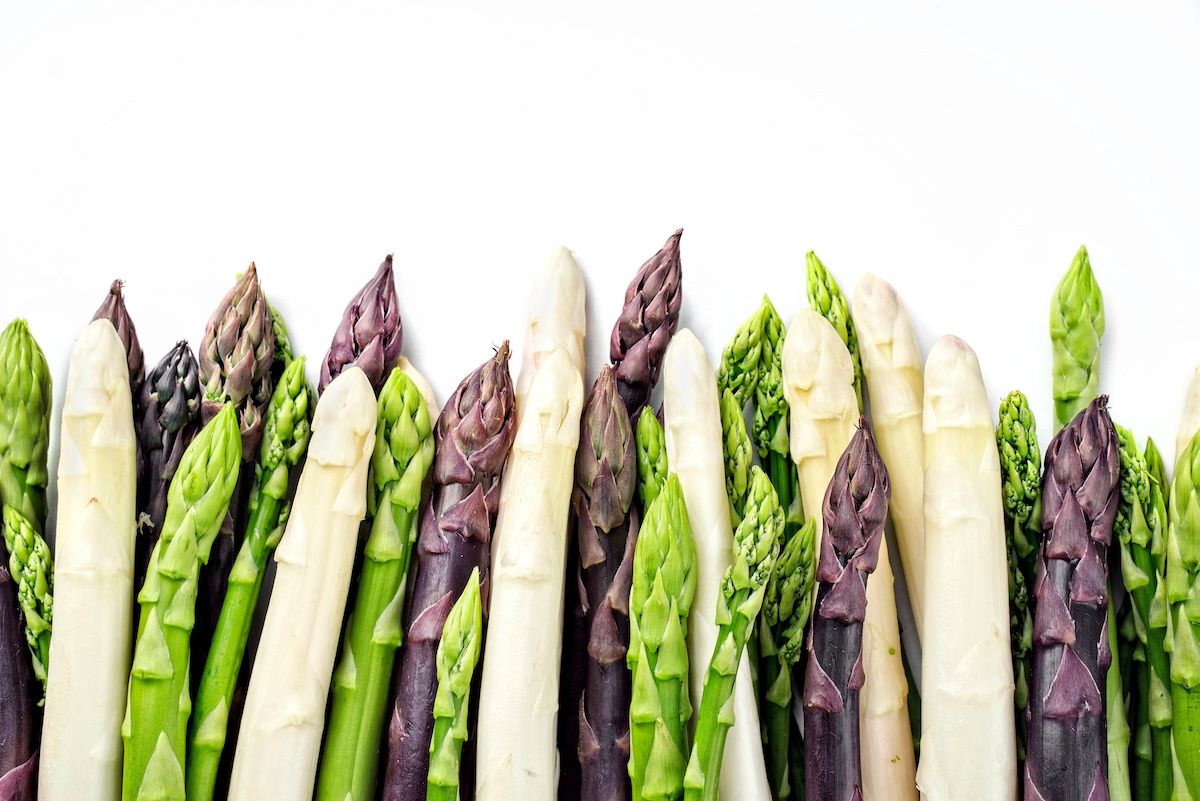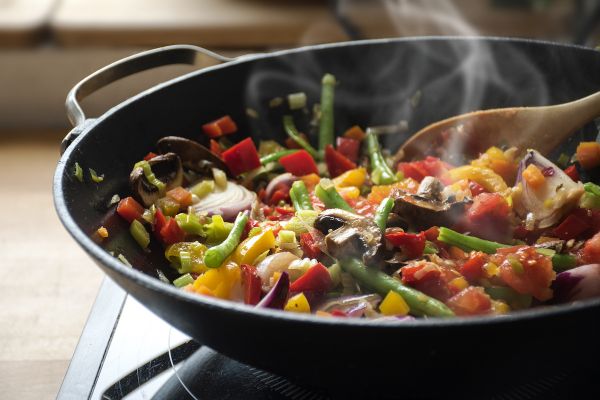Green, white or purple . . . it's all good for you!
With the warmer months finally upon us, delicious and nutritious local produce is starting to come into season! And spring and early summer is a great time of the year for asparagus, a plant that grows wild along seashores and riverbanks and has been cultivated for over 2000 years in places like Egypt, ancient Rome and Greece.
During the asparagus harvest season, you’ll not only find asparagus in its usual green hue, but also varieties that are purple or white in color. White asparagus is the same plant as green asparagus, but is covered with dirt while it grows, which blocks it from the sun, preventing photosynthesis and the development of chlorophyll, which turns the spears green. Purple asparagus is a variety that produces sweeter, more tender, and larger stalks.
Health benefits of asparagus
The American Institute for Cancer Research recommends a largely plant-based style of eating that includes a variety of fruits and vegetables to reduce cancer risk. Like many vegetables, asparagus has lots of different vitamins and minerals, such as vitamin A and folate. It is also a good source of fiber, which can help promote digestive health and cardiovascular health. In addition, this tasty spring veggie contains a variety of phytochemicals which may provide protective health benefits. One example of a phytochemical found in asparagus is a compound called sulforaphane, which is also found in broccoli and other cruciferous vegetables.
Tips for choosing and preparing asparagus
- Look for firm stalks with a deep color.
- Avoid any asparagus that appears wilted. The thinnest stalks are often the most tender.
- Store your asparagus bunch upright in the refrigerator in a cup of water to keep it fresh longer.
- Be sure to wash asparagus and all other produce thoroughly before cooking or eating.
How to cook asparagus
- Trim the stalks. Gently bend and break off or cut off the bottom end of the stalk. Removing about an inch or two will get rid of the tougher part on the bottom of the stalk.
- Don’t overcook or waterlog asparagus. Green asparagus will lose its vibrancy if overcooked, and purple asparagus will turn green if cooked too long.
- Try microwaving or steaming asparagus for just a few minutes. The goal is to have bright green spears and to maintain some crunch.
- Asparagus is delicious roasted in the oven or grilled at your next cookout! To roast, cook for about 12 minutes in a single layer on a baking sheet in an oven preheated to 400 degrees F. Toss the asparagus lightly in oil before cooking and add salt, pepper, or other herbs or spices if you wish. Lemon juice and asparagus are great additions to roasted or grilled asparagus as well. To grill, brush the asparagus with oil and grill for about 10 minutes. Here is a tasty recipe for Roasted Asparagus with Garlic.
- Leftover asparagus is great chopped up in an omelet, tossed in a salad, pureed into a soup, or added into a stir fry. Try this Spring Pea, Asparagus and Mint Salad for a fresh tasting dish!
Have nutrition questions?
Our nutrition team can play an important role in your care — before, during and after treatment.
Learn more


